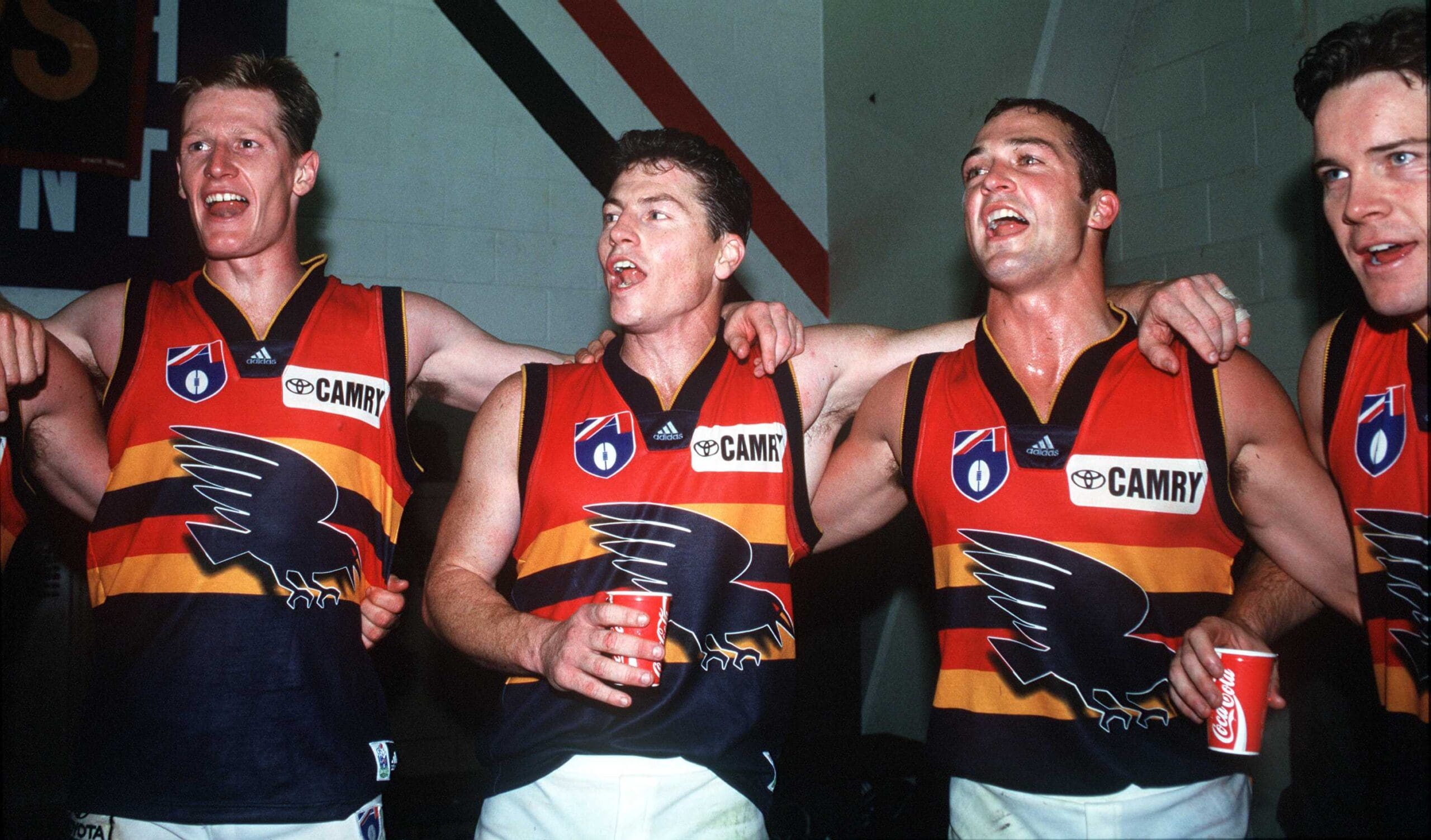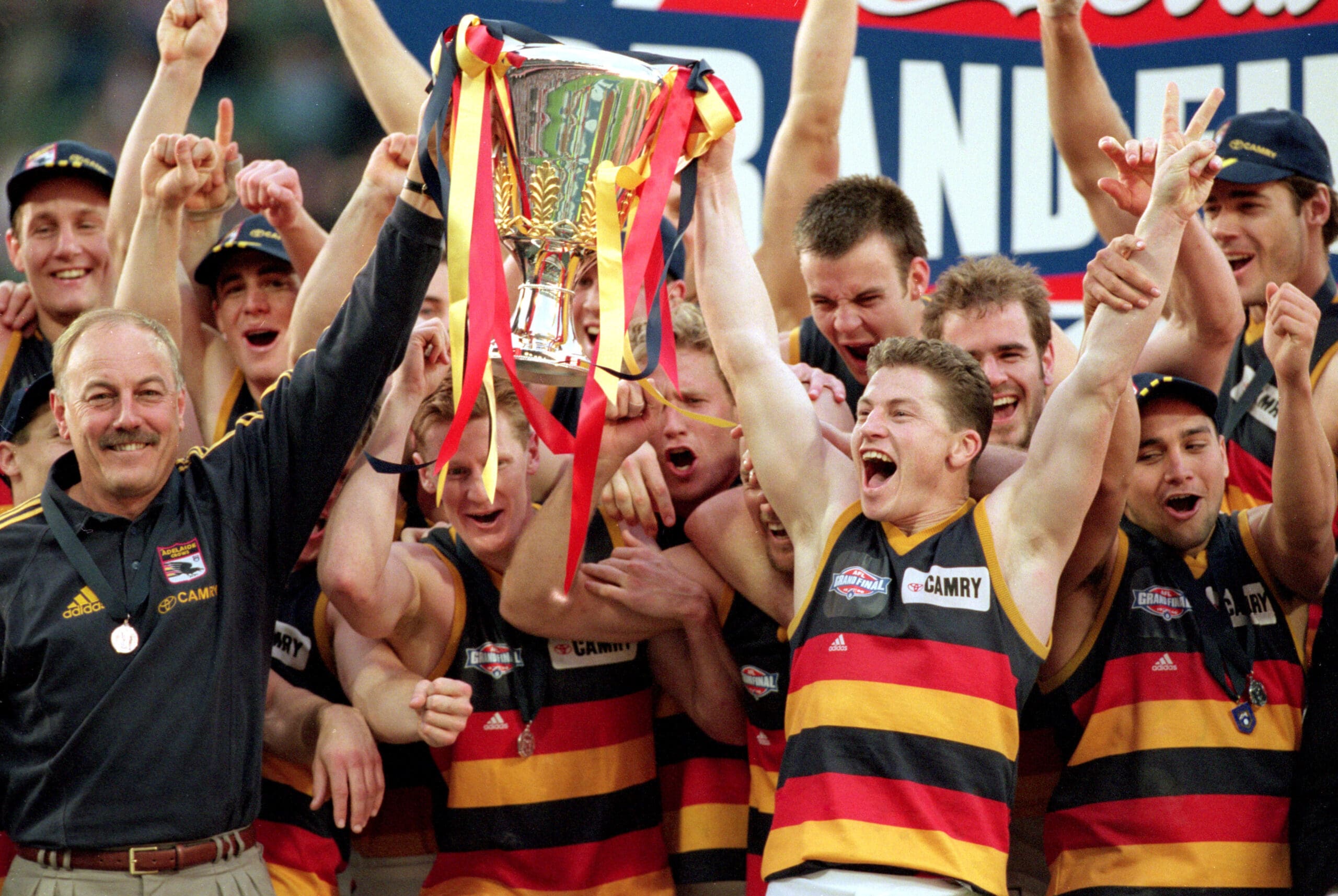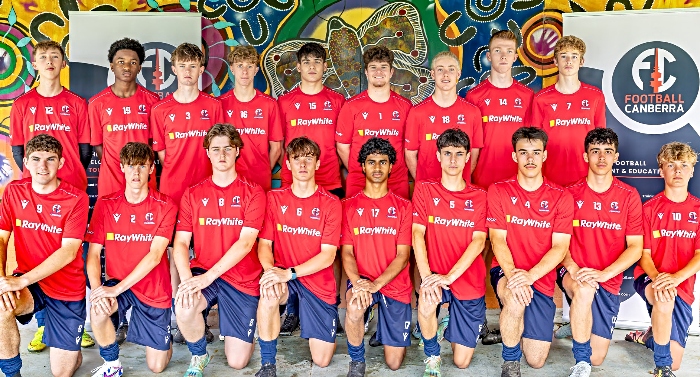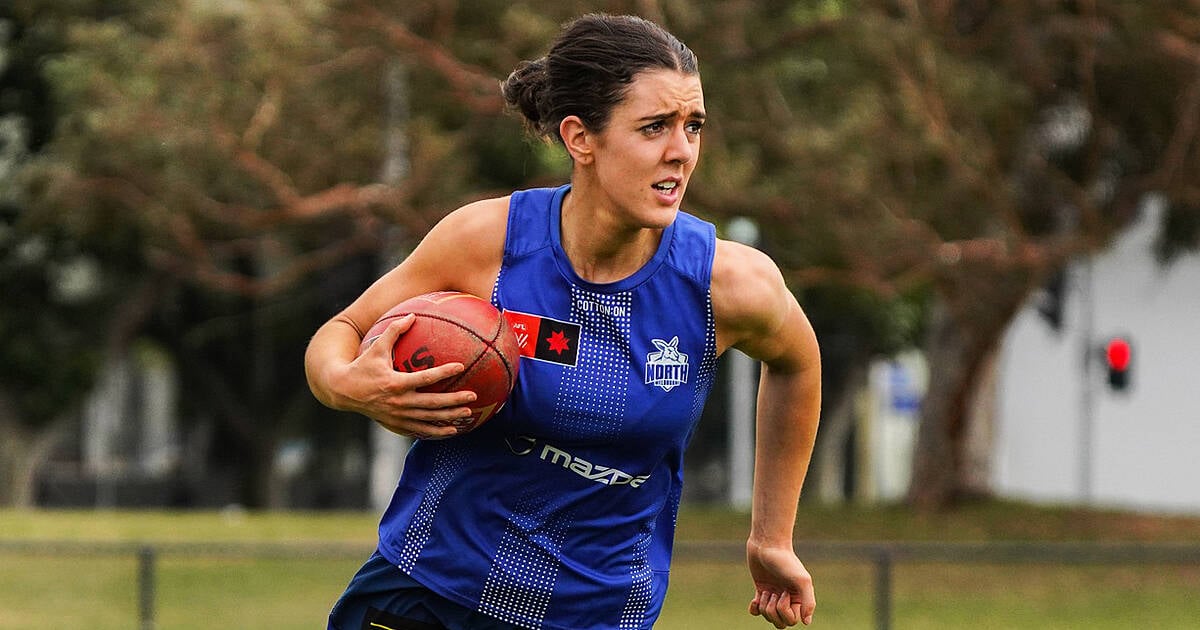The lucky breaks that helped Mark Bickley and the Crows take flight

- by Admin
- July 22, 2024

Mark Bickley wasn’t supposed to be a part of Adelaide’s initial 70-man training squad ahead of the new club’s AFL debut season of 1991.
He was also absent from coach Graham Cornes’ cut-down list of 42 names the night before the Crows’ official list lodgement.
Yet somehow Bickley, who would go on to captain the club’s back-to-back premiership triumphs in 1997-98, made the cut both times in two incredible sliding doors moments that kickstarted his 272-game career.
He had only just started making a name for himself at South Adelaide in the SANFL in 1989-90 when South Australia’s longings to enter the AFL finally reached fruition, with the Adelaide Football Club given the green light in late 1990.
That summer, more than 70 local prospects auditioned to make the cut. To make sure all SANFL teams and their supporters got behind the state-wide entity, the squad needed to be evenly represented from every SA club, with a broad cross-section of ages included.
Bickley recalls his invitation to the training squad probably came due to being in the right place at the right time, and at the right age, as much as his actual football ability.
“When they were getting the list of 70-odd together, one of the things they had to do was appeal to all of South Australia, and make sure there was an even spread from all clubs,” Bickley tells Zero Hanger’s AFL Team Builders podcast.
“Back then, Glenelg and Port Adelaide were really strong, and potentially they [the selectors] could’ve picked 15 players from both of those clubs, but they wanted to get an even spread so everyone felt like it was a part of their team.
“At the end of it [the training squad selection] they basically asked ‘are we short any teams?’ and saw that South Adelaide didn’t have enough [players in the squad].


“The other thing they wanted was to have an even age spread – not too many old blokes, not too many young blokes. Again, they asked ‘what are we missing?’ and someone answered ‘we’re a bit light-on for blokes born in 1969′. So then they said ‘is there anyone decent from South Adelaide who was born in 1969?’
“They went down the list and they said ‘oh, there’s Mark Bickley – let’s put him on the list’.”
Lucky strike Number 1.
The second was to come at the end of a brutal first AFL pre-season, when the hopefuls trained 13 days per fortnight as coach Cornes sought to turn the list into the fittest in the AFL. Most players did so without being paid.
The unassuming Bickley wasn’t sure if he was going to make the cut as the date for the official list lodgement crept closer and recalls being apprehensive as D-Day loomed. Much to his relief, he did make the final squad, although about three decades later he found out just how close he came to missing out.
“It’s amazing now, 30-odd years or so have passed, but there was another sliding door moment,” he says.
“Graham Cornes and I have been good friends throughout the journey, and he told me about 12 or 18 months ago that he was going through some old paperwork – he was meticulous with all his record-keeping – and he found a sheet of paper and it was dated January 23 [1991], and what was written down was the Crows’ final list of 42 players. And my name wasn’t on the list!
“He said he couldn’t remember what took place, but something had happened between him finalising the list and then lodging it with the [Adelaide] board the next morning. And I somehow went from not being on the list, to being on it.
“That’s how close it can get in terms of people making decisions and getting an opportunity, or a slice of luck, and you end up where you end up.”
Bickley may have had a slice of luck when it came to eking his way onto the Crows’ inaugural list but it was a sign of Adelaide’s helter-skelter, ad-hoc beginnings as they worked around the clock to prepare for 1991.
The club only had a few months to get things off the ground after being established following a contentious and controversial period in South Australian football history.
It was mid-1990 when the AFL sought to expand its national footprint again after the move of South Melbourne to Sydney (1982) and the launch of West Coast and Brisbane (1987).
South Australia was the natural next cab off the rank, but there was a stumbling block – the SA clubs had unanimously accepted a SANFL proposal to not enter a club from the state into the AFL until 1993.
Mere weeks later it was revealed Port Adelaide, frustrated at losing a congo line of their best players to Victorian football, and with ambitions to prove themselves at a higher level, started secret negotiations with the AFL to enter the competition in 1991.
Ironically, it was Port’s desperation to join the AFL which fast-tracked the formation of the Crows, because only a month or so after collectively deciding not to push forward with any AFL plans, the SANFL officially launched a submission for a composite AFL team.
After legal action from all parties, the AFL agreed, in October 1990, to accept the bid, and the Adelaide Football Club was born.
That meant the new club had about six months to prepare for their debut season.
Bill Sanders was the club’s inaugural General Manager and CEO, taking on the role after more than 30 years with the State Bank and fresh from brokering a merger between SANFL clubs Woodville and West Torrens.
He was tasked with developing the Crows from a dingy office under the members’ stand at Football Park. He distinctly recalls focusing on establishing the club’s identity, including the colours, nickname and song.
“Establishing a new club in a national competition was absolutely a clean sheet of paper,” he says. “It was quite daunting.
“When it came to the colours, we wanted to adopt the state colours – red, blue and gold.
“In regards to the [club’s] nickname, we were throwing around several options – the Sharks, being near the coast, and the Lakers, being based at West Lakes. But ‘Croweaters’ [early settlers in SA were alleged to have eaten the breast meat of crows when there was a shortage of red meat] was shortened to Crows, and that’s how it landed.
“With the song … [major sponsor] Toyota initiated a ‘Here We Go, Camry Crows’ theme song which we sort of adopted but I thought at some point, in the event of the club losing Toyota as a major sponsor … we were stuck with their song, which was more of a commercial jingle.
“So the board said I should organise a different song – I went away looking for strong marching-band music beds and I discovered the US Marine Hymn that we have now. I contacted the Marine headquarters in Washington DC and got their approval and we used the music bed, I jotted down some lines on a whiteboard one afternoon and then we had the song.
“We had no money, so we did everything on the cheap, and I went to the SA Police Force and organised their band to play the song, recruited half-a-dozen male singers and half-a-dozen of our players and we recorded the song. And somehow it’s now embedded in the Crows’ psyche.”
Cornes had perhaps more important things to focus on after he was signed as the inaugural coach. A former playing great and brilliant South Australian State of Origin coach, Cornes had turned Glenelg into a SANFL powerhouse when he was tapped on the shoulder by those tasked with building the Crows.
“Given the fact I was the state coach of the previous four or five years, I thought I would have a chance of being the coach – I figured I’d be one of the contenders,” he says.
“So I sat down and wrote out a presentation and a plan for the team, and was invited to present to the interim board of the Adelaide footy club and shortly after that was appointed coach
“At the start of October 1990, there was a chief executive and nothing else really – no officials, no equipment, no anything and then three weeks later, I was the coach.”
Cornes had little time to develop a game plan, and the club’s threadbare facilities made life difficult, as he recalls.
“We just got straight into it, but we didn’t have any equipment or facilities, really. I made a specific quest to use Football Park [to train on] but the groundsman there was very precious and we didn’t get a lot of access to our home ground.
“Then the first night [of training] we didn’t have any balls! We had to race around and ended up pinching some of the under-18 squad’s footballs to get our first night underway.
“It sounds ridiculous now, really. But the guys showed up and they trained harder than they’d ever trained, and it all unfolded from there.”
Unfold it did, with the Crows starting in a blaze of glory for their debut contest against eventual premier Hawthorn on a memorable Friday night at Football Park on March 22, 1991.
Almost 45,000 fans crammed into the stadium as their new home team marked their entry into the league with an 86-point demolition of the Hawks.
The Crows went on to finish in ninth place out of 15 teams on the AFL ladder, with 10 wins and 12 losses and a percentage of 89.44.
Six years later, they’d be premiers, and then double it up again the following season.


For the full story of how the Crows came to be, listen to the AFL Team Builders podcast, which goes into further detail in areas such as:
- How Cornes still laments Darren Jarman slipping through the club’s fingers and heading to Hawthorn, despite having signed a heads-of-agreement to join the Crows.
- The woeful early facilities for the players, with a Football Park bar transformed into a makeshift weights room during the first preseason.
- Bickley’s recollections of the ‘Hunger Games’-style selection process that saw the playing squad whittled down until the final 42 names remained.
- Cornes’ blow-up with a builder ahead of the Round 1 game vs. Hawthorn, when it appeared there would only be one coaches’ box constructed – for the visitors, not Adelaide.
- Further insights into the inaugural list build.
- Cornes’ recollections of the difficulties of playing at traditional VFL venues such as Victoria Park, Moorabbin and Windy Hill.
The Latest News
-
December 28, 2024Boxing Day heist: Owner’s invite to ‘rob’ his store sparks all-out frenzy
-
December 28, 2024LIVE: Demon’s Aus Open chances boosted if he makes strong start to summer at United Cup
-
December 28, 2024Live: Jordan Thompson brands Purcell doping ban ‘a joke’
-
December 28, 2024Piastri’s cheeky swipe at controversial Kohli moment
-
December 28, 2024‘Stupid, stupid, stupid!’: Great eviscerates star over brainfade as Cummins move pays off





